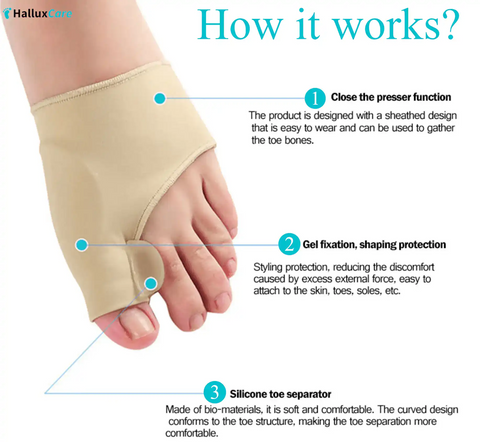Facing Bunion Surgery? Here’s What You Need to Know About Recovery and Pain Management
If you’re considering bunion surgery, you’re not alone. Bunions, those painful bony bumps that develop on the joint at the base of your big toe, can cause significant discomfort and limit footwear choices. For many, surgery becomes the best option when other treatments fail. But what’s the recovery process really like? And how can you ease pain post-surgery? Let’s dive into one Reddit user’s firsthand experience and explore practical tips for managing bunion pain and healing.
What to Expect After Bunion Surgery
Bunion surgery is highly individualized, with different procedures tailored to your specific foot anatomy and condition. As one Redditor candidly shared:
- Two surgeries, two outcomes: The user underwent different types of surgeries on each foot and reported successful recoveries for both.
- Post-healing pain triggers: While recovery went smoothly, they experienced mild pain after healing, particularly when wearing tight-toe shoes.
This highlights an important takeaway: Even after a successful surgery, footwear choices can significantly impact your comfort.
Expert Insight
According to the American Orthopaedic Foot & Ankle Society (AOFAS), bunion surgery aims to realign the bones, ligaments, and tendons around the affected joint. However, recovery timelines vary depending on the procedure performed. Most patients can resume normal activities within 6–12 weeks, though swelling and discomfort may persist for up to 6 months.
Managing Pain After Surgery
Healing from bunion surgery doesn’t mean you’re entirely free from discomfort. Here are some expert-backed tips to manage post-surgery pain:
1. Choose Proper Footwear
- Opt for shoes with a wide toe box to prevent pressure on your toes and bunion area.
- Look for soft, flexible materials to minimize irritation.
- Avoid high heels and pointy-toe designs, which can undo surgical corrections.
2. Use Supportive Products
- Medical-grade bunion sleeves can provide gentle compression and pain relief during recovery and beyond.
- Orthopedic devices, like the Orthopedic Bunion Pain Relief & Correction Sleeve, support natural alignment and can help reduce discomfort.
4.9 ⭐⭐⭐⭐⭐ ( 1843 reviews )
3. Keep Moving, But Slowly
- Gradual movement helps to reduce stiffness post-surgery. Follow your doctor’s recommendations for physical activity.
- Avoid high-impact activities like running until you’re fully healed.
4. Monitor and Treat Swelling
- Swelling can persist for months after surgery. Use ice packs and elevate your foot to manage inflammation.
- Compression sleeves, like the ones mentioned above, can also help control swelling.
5. Follow a Pain Management Plan
- Over-the-counter pain relievers like ibuprofen can help reduce inflammation and discomfort.
- Consult with your doctor if stronger medication or physical therapy is needed.
How to Avoid Bunion Recurrence
Bunion surgery reduces pain and corrects deformity, but bunions can return if you don’t take preventive measures. Here’s how to keep your feet healthy post-surgery:
- Wear supportive footwear: Say goodbye to pointy-toe heels and opt for ergonomic designs.
- Incorporate stretches and exercises: Strengthening foot muscles can help maintain proper toe alignment.
- Use protective gear: Products like the Tailor's Bunion Bunionette Pain Relief Protection Sleeve offer ongoing support for your feet.
Tools to Support Your Recovery
If you're looking for relief from bunion pain, consider using the Orthopedic Bunion Pain Relief & Correction Sleeve, which provides support and helps to alleviate discomfort.
For additional protection, the Tailor's Bunion Bunionette Pain Relief Protection Sleeves are designed to offer comfort and protection for bunionette pain.
To nourish and soothe the skin around bunions, as well as to promote healthy hair, consider the Jamaica Black Castor Oil Soothing Oil. Known for its moisturizing and anti-inflammatory properties, it helps alleviate discomfort around bunions and supports hair growth and scalp health.
Key Takeaways
- Recovery from bunion surgery varies from person to person but typically involves 6–12 weeks of reduced activity.
- Post-surgery pain can be managed with proper footwear, supportive products, and gradual movement.
- Long-term habits, including wearing ergonomic shoes and performing foot exercises, are essential to prevent bunion recurrence.
- Supportive tools like compression sleeves and anti-inflammatory products can aid in recovery and ongoing foot health.
Practical Tips for a Smooth Recovery
- Prepare your home: Arrange a recovery space with easy access to essentials to reduce walking during the first few weeks.
- Follow your surgeon’s advice: Attend all follow-up appointments and adhere to any physical therapy recommendations.
- Invest in quality footwear: Consider consulting a podiatrist for shoe recommendations tailored to your needs.
- Be patient: Healing takes time, and swelling may persist for months even as your pain diminishes.
FAQs
1. How long does bunion surgery recovery take?
Most patients recover within 6–12 weeks, but swelling and mild discomfort can last up to 6 months. Your recovery time may vary depending on the type of surgery performed.
2. Can bunions come back after surgery?
Yes, bunions can recur if you don’t take preventive measures, such as wearing supportive footwear or using protective devices.
3. Does bunion surgery hurt?
While the surgery itself is performed under anesthesia, some discomfort is expected during recovery. Pain management options like ice, compression sleeves, and medications can help.
4. When can I walk again after bunion surgery?
Most patients can start walking with the help of a surgical boot within a few days to weeks, depending on the procedure. Always follow your doctor’s timeline for resuming physical activity.
5. Are there non-surgical alternatives to bunion treatment?
Yes, non-surgical options include orthotics, bunion cushions, and physical therapy. However, surgery is often recommended for severe cases with persistent pain or deformity.
Disclaimer
This article is for informational purposes only and does not constitute medical advice. Always consult with a qualified healthcare provider for personalized recommendations.
Author Bio
Dr. Emily Harper, DPM, is a board-certified podiatrist specializing in foot and ankle surgery. With over a decade of experience, she is passionate about helping individuals achieve optimal foot health through innovative treatment options and preventive care.



